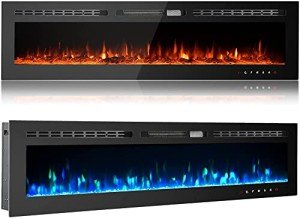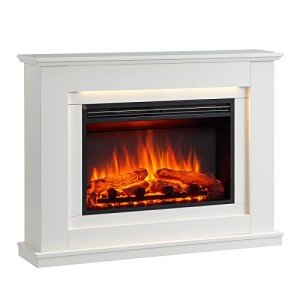A Comprehensive Guide to Small Fireplaces: Efficient Heating and Cozy Living
In an age where energy effectiveness and area optimization are becoming increasingly important, small fireplaces have actually become an appealing option to traditional, large hearths. These compact heating solutions use warmth and a centerpiece for any room, heightening both comfort and aesthetic appeal. This post explores the various types of small fireplaces, their advantages, installation factors to consider, and maintenance tips, ultimately helping house owners make informed decisions when thinking about these lovely heating choices.
Understanding Small Fireplaces
Small fireplaces use a variety of styles, including electric, gas, ethanol, and wood-burning models. Each type provides special advantages and design possibilities, making them suitable for numerous living areas.
Kinds Of Small Fireplaces
| Fireplace Type | Description | Pros | Cons |
|---|---|---|---|
| Electric | Uses electricity to create heat. Uses numerous designs, consisting of wall-mounted and freestanding units. | - Easy to install - Low upkeep - No venting needed | - Limited heat output - May sustain greater electricity expenses |
| Gas | Burns gas or gas. Typically offered as logs in a traditional fireplace or modern designs. | - Efficient heat output - Cleaner than wood - Easy ignition | - Requires gas line setup - Some units need venting |
| Ethanol | Burns bioethanol, providing genuine flames without a chimney. | - Eco-friendly - Portable - No setup needed | - Limited heat output - Higher fuel expenses |
| Wood-Burning | Traditional fireplaces that burn fire wood. Typically used in more rustic settings. | - Great heat output - Rich atmosphere - Can be used throughout power outages | - Requires a chimney - Regular upkeep and cleansing |
Advantages of Small Fireplaces
- Area Efficiency: Small fireplaces are ideal for houses, condominiums, and smaller sized homes. They make the most of heat without using up extreme flooring area.
- Affordable Heating: In certain cases, small fireplaces can supplement main heating systems, lowering total energy expenses while creating a more comfy environment.
- Ambiance and Aesthetics: They provide an inviting centerpiece to a space, creating a cozy atmosphere ideal for relaxation and social gatherings.
- Versatility: Available in various designs and styles, small fireplaces can complement any decor, from modern minimalist to rustic traditional.
Setup Considerations
When considering a small fireplace, setup is an important element that can impact the choice of model. Below are useful factors to consider:
- Local Regulations: Building codes can vary by place; always examine regional standards before installation.
- Ventilation Needs: Depending on the type, small fireplaces might need various ventilation systems. Gas fireplaces might require venting outdoors, while electric models do not.
- Source of power: Electric models need distance to electric outlets, while gas and ethanol models might require a gas line or fuel storage.
- Weight and Structure: Installing wall-mounted systems may require strengthened wall locations, whereas free-standing models are much easier to relocate.
Maintenance Tips
Like any other home appliance, small fireplaces require regular upkeep to work effectively and securely. Here are essential maintenance tips for various fireplace types:

For Electric Fireplaces:
- Cleaning: Wipe down the unit with a soft cloth to get rid of dust and keep the heating system ducts clear.
- Evaluation: Check the power cord frequently for any damages or signs of wear.
For Gas Fireplaces:
- Annual Inspections: Schedule yearly assessments by a professional to make sure safe gas flow.
- Clean the Logs: Regularly tidy the burner and logs to maintain optimal efficiency.
For Ethanol Fireplaces:
- Fuel Storage: Store ethanol fuel securely away from direct sunlight and heat sources.
- Regular Cleaning: Clean the burner after each usage to preserve effectiveness and prevent soot buildup.
For Wood-Burning Fireplaces:
- Chimney Sweeping: Have the chimney expertly cleaned up once a year to prevent creosote buildup.
- Fire wood Storage: Only usage dry, skilled wood to lessen smoke and promote efficient burning.
Frequently Asked Questions
1. Can I set up a small fireplace myself?
While some electric and ethanol fireplaces are reasonably easy to install, it is advisable to hire a professional for gas and wood-burning systems to ensure compliance with regional structure codes.
2. How much does it cost to run a small fireplace?
The cost will vary depending on the kind of fireplace. Normally, electric fireplaces might sustain higher electricity costs, while wood-burning alternatives can draw from renewable firewood materials.

3. Do I need a permit for setup?
Permits are typically needed for gas and wood-burning fireplaces due to their installation intricacy and security guidelines. Always consult local authorities.
4. For how long can I run an electric fireplace?
A lot of electric fireplaces can run for extended periods; nevertheless, it's suggested to follow manufacturer guidelines to avoid getting too hot or harming the unit.
5. What type of small fireplace is best for a small space?
This mainly depends upon specific requirements. Electric models are flexible and easy to install, while gas and ethanol options provide genuine flames with effective heat output.
small fireplaces (linked web-site) represent a functional and elegant alternative for those seeking effective heating solutions in compact home. With numerous types readily available, property owners can choose designs that align with their aesthetic choices and area requirements. By understanding the installation procedures and routine upkeep required, individuals can enjoy the comfort and ambiance that small fireplaces offer for several years to come. Whether for a cozy evening in your home or an inviting space for gatherings, small fireplaces are an enduring component of modern and traditional design alike.

